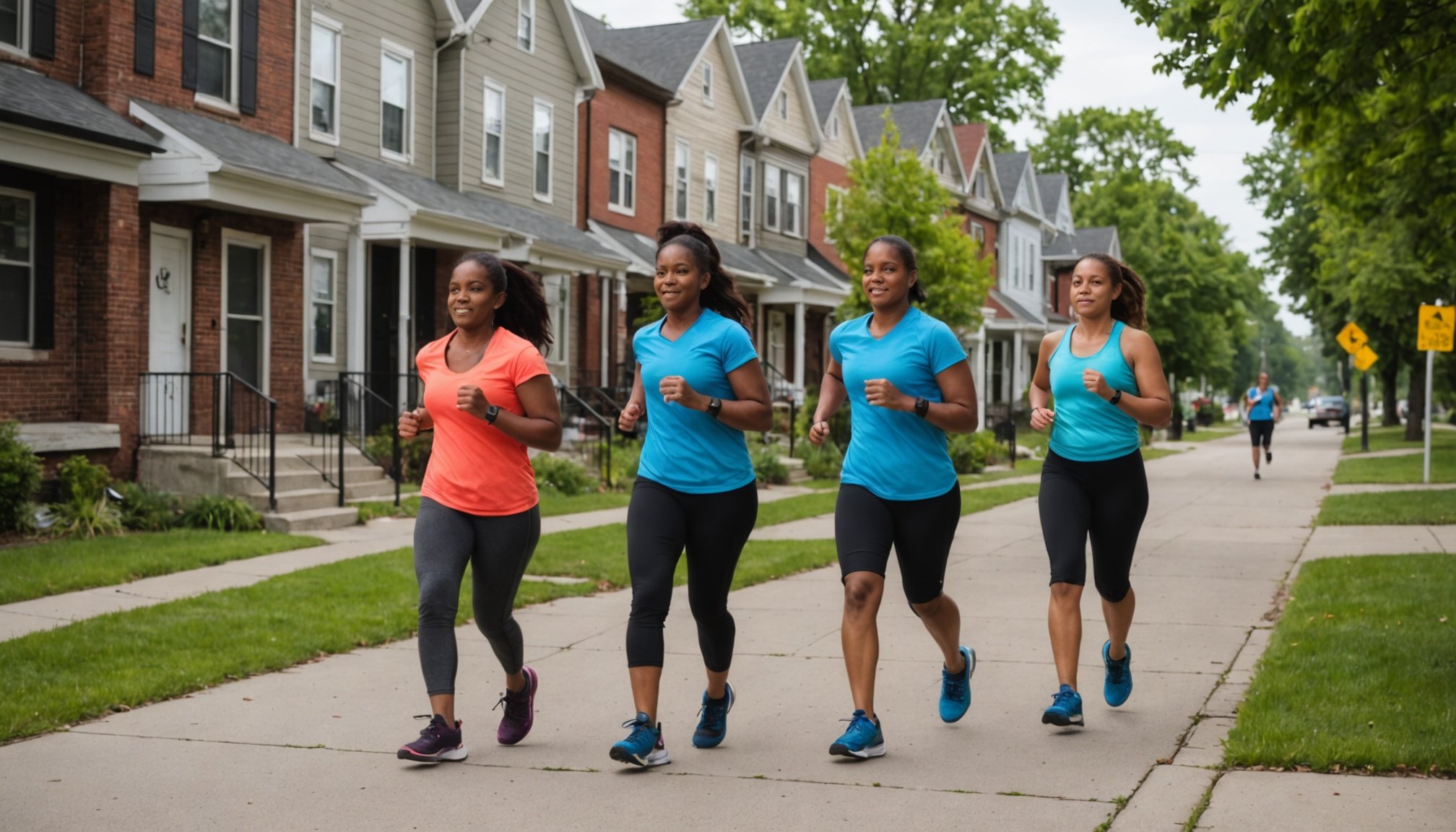Overview of Community Fitness Initiatives
Community fitness programs are organised efforts aimed at improving public health by making physical activity accessible to everyone, especially in areas with economic disparities. These initiatives vary widely, ranging from free outdoor exercise classes to organized sports leagues and health workshops. Their primary goal is to promote healthier lifestyles and reduce the risk of chronic diseases within the community.
Addressing Health Disparities
These initiatives are critical in tackling health disparities that often correlate with economic disparities. Communities in economically disadvantaged neighborhoods may lack access to quality recreational facilities or services. Consequently, community fitness programs play a vital role in bridging this gap. They provide structured opportunities for exercise and educate residents on the importance of physical health.
Topic to read : Exploring the Influence of Early Multilingual Exposure on Autism Severity in Children
Existing Programs
Several community fitness programs have successfully been implemented in various neighborhoods. For instance, urban areas often introduce walking clubs or free fitness classes in public parks. Other programs might include partnerships with schools to utilize their facilities for after-school sports, or collaborating with local organizations to offer nutrition and wellness workshops. These offerings not only foster a sense of community but also empower residents to take control of their health. By focusing on inclusive activities and understanding the unique needs of economically challenged areas, community fitness initiatives can lead to significant improvements in public health.
Impact on Public Health Outcomes
Engaging in fitness initiatives has led to noteworthy public health improvements.
Also to discover : Unlocking Joint Health: The Remarkable Benefits of Aquatic Aerobics for Seniors
Statistical Insights
Key statistics reveal that fitness initiatives positively impact community health metrics. The correlation between increased physical activity and decreased healthcare costs is significant. For instance, communities that invested in recreational facilities observed a reduction in obesity rates and increased participation in local sports, leading to lower instances of lifestyle-related diseases. Such data demonstrate that public health investments can lead to tangible benefits, including reduced healthcare expenditure and enhanced overall community well-being.
Case Studies
Several successful fitness programs exemplify how structured activities can enhance community health. For example, a citywide cycling initiative increased physical activity amongst a range of age groups, resulting in a 20% reduction in heart-related illnesses. This program not only motivated more community members to engage in regular exercise but also sparked interest in eco-friendly community practices. Lessons from these initiatives highlight the importance of accessibility and inclusivity in program design, ensuring that all demographics can participate and benefit equally.
Participant Testimonials
Real-life stories from individuals underscore the personal benefits of engaging in fitness programs. One participant noted, “Joining the local running club not only improved my fitness outcomes but also connected me with like-minded individuals, fostering a sense of community. These testimonials remind us of the power of community support and motivation in achieving health goals.
Barriers and Facilitators of Fitness Programs
Fitness programs in economically disadvantaged neighborhoods often encounter distinctive challenges. Identifying barriers to participation and highlighting facilitators of success is crucial for enhancing community engagement.
Identifying Barriers
Participation in fitness programs may be hindered by several obstacles. A primary barrier includes the lack of transportation, which makes accessing fitness facilities challenging. Moreover, social stigma associated with physical activity in certain communities can deter individuals from participating. For those living in impoverished areas, socioeconomic status plays a significant role in participation rates. People may not have the financial means to afford membership fees or equipment, leading to underutilization of available resources.
Facilitators for Success
To counter these challenges, tailored strategies are essential. Successful fitness programs often leverage community partnerships to improve accessibility and reduce costs. Collaborations with local businesses and organizations can provide subsidized or free access to facilities. Building strong relationships within the community encourages trust and enhances community engagement. For example, developing programs that are culturally sensitive and align with community values can greatly increase participation. Additionally, employing local residents as program leaders fosters a sense of ownership and support. These steps towards removing participation barriers and augmenting facilitator roles can significantly boost fitness program success.
Policy Implications and Recommendations
When crafting policy recommendations focused on sustaining fitness initiatives within communities, several pivotal elements come into play. Primarily, supportive policies are instrumental in ensuring the longevity and effectiveness of fitness programs. Without a solid policy framework, even the best-intentioned programs can falter.
Effective public health policy must address both funding and resource allocation. Identifying reliable and diverse funding sources is crucial. Public-private partnerships can offer substantial financial support and community engagement, ensuring a program’s sustainability. Government grants and corporate sponsorships are two examples of potential funding streams which enhance budget allocations. These enable health programs to expand beyond traditional scope.
Local governments, being at the forefront of community engagement, play a critical role in facilitating optimal health outcomes. They have the capacity to integrate fitness programs within wider community health strategies, delivering the benefits directly to the residents. By collaborating with stakeholders, they can initiate impactful changes that resonate at a grassroots level and encourage community participation.
In essence, public health policy should prioritize creating and maintaining ecosystems where fitness programs can thrive, supported by well-thought-out funding plans and strong government involvement. This aligns resources effectively with community needs.
Strategies for Implementation
In implementing effective initiatives, engaging community stakeholders is crucial for creating tailored fitness programs that address local needs. By involving these stakeholders, programs are designed with inclusivity at their core, ensuring that diverse community voices contribute to the development process. This approach not only fosters acceptance but also bolsters long-term engagement.
Designing Effective Programs
Successful fitness programs often share key elements such as clear objectives, accessibility, and ongoing evaluation. These elements help in crafting programs that are not just comprehensive but also flexible enough to adapt as community needs evolve. Building a framework with community-driven initiatives ensures that local insights guide program relevance and outreach efforts.
Sustainability Practices
Long-term planning is essential in ensuring sustainable community fitness programs. An emphasis on continuous funding and active community engagement can maintain momentum and impact. Highlighting case studies from other regions illustrates successful sustainability practices, providing valuable insights and practical templates for local adaptation.
Future Directions
As trends in community fitness and public health emerge, adaptability becomes even more critical. Innovations in program delivery and technology, such as virtual fitness platforms, present new opportunities for reaching a broader audience. Encouraging communities to stay informed and adaptable ensures programs remain relevant, maximizing their potential impact on public health.











